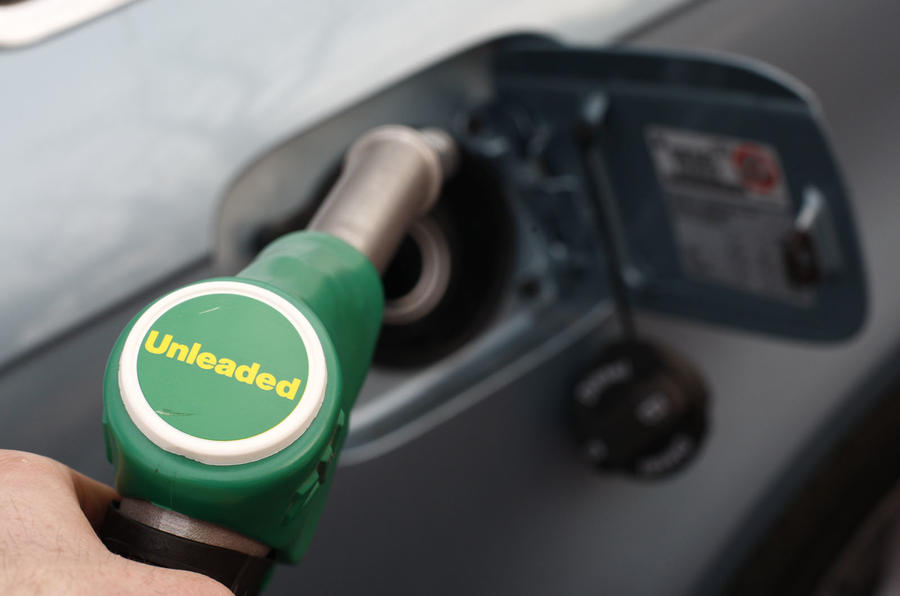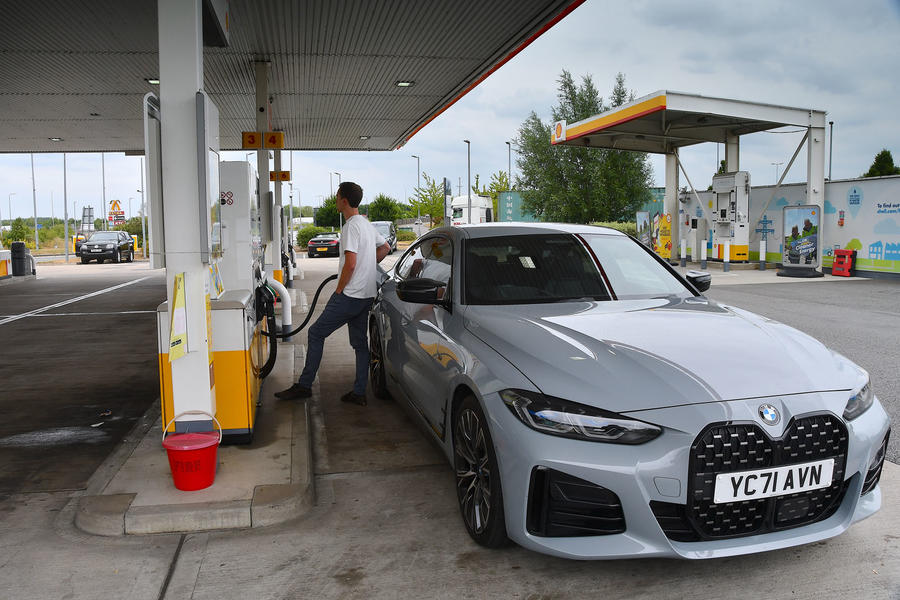E10 is a mix of 90% unleaded petrol and 10% ethanol – hence the ‘E10’ name
E10 unleaded petrol is now the standard, but is it the best choice for your sports car?
The widespread adoption of E10 unleaded petrol is now pretty much complete, with almost every forecourt in the land dispensing the stuff from the green pump. It was in late 2021 that the government announced the enhanced ethanol-mix fuel would be used as the standard, premium grade across the country, citing its lower CO2 emissions compared with the previous E5 blend.
Despite loudly voiced concerns at the time, the almost universal uptake of E10 by forecourts across the UK has largely gone without a hitch. It’s obviously early days yet, but for those filling up, there’s been no discernible difference in the way their car performs on the newer fuel. Our colleagues at Autocar sibling title What Car? reported in 2014 that E10 could potentially reduce the efficiency of an engine by about 10%, but in terms of power and torque, things should remain the same.
That said, many owners of these types of machine actually use super-unleaded, which can deliver fractionally more power thanks to a higher octane rating of between 97 and 100 RON that more effectively resists knock (the early combustion of fuel and air that can cause cylinder pressure inconsistencies and so reduced performance) and so allows highly tuned engines to perform at their peak. Crucially, these high-octane unleaded options are still using the old E5 blend, meaning they don’t suffer from any of the potential pitfalls of E10.
However, with fuel prices continuing to rise, many owners of sports and performance cars are looking at their fast depleting bank accounts and wondering whether a switch to the less costly, E10 premium unleaded is a good idea or a false economy. So what is the answer? Well, let’s take a look.
What is E10 fuel?

First of all, we need to discover what E10 fuel actually is. Essentially, it’s a mix of 90% traditional unleaded petrol and 10% ethanol (hence the E10 name), which is produced from sustainable sources such as corn, barley and sugar cane. This combination of fossil fuel and renewable biomass is nothing new, because the previous E5 unleaded used a 5% ethanol mix, while B7 diesel runs at 7%.
The theory behind upping the ethanol mix in the fuel is that it should help reduce greenhouse gas emissions. The UK government estimates its widespread adoption could reduce CO2 output by 2%. That might not seem like a huge amount, but as Britain moves towards a net-zero carbon future, every little helps.
Can my car run on E10?
Most cars built in the past 20 years or so will be able to run on E10, because the fuel has been widely available in other countries for years. In fact, of the roughly 30 million cars in the UK, the RAC Foundation estimates just over 634,000 won’t be able to use E10. Of these, just 150,000 were built after the year 2000, meaning most are classic or vintage machines.
On these older cars, experts have warned that the increased ethanol content is likely to lead to issues in the long term, the most common being blocked fuel filters, damaged fuel pumps, the more rapid degradation of fuel lines and corroded carburettors. However, the government has confirmed that owners of these cars will be able to purchase less problematic E5 fuel, albeit in more expensive, higher-octane super-unleaded form.
As an aside, some classic car experts believe the engines of older cars (particularly those from the 1920s and 1930s) will actually run better on E10, even if the already mentioned ancillaries will suffer. The logic behind this theory is that when these machines were new, some brands offered petrol with a high ethanol content that was blended to deliver smoother running with less misfiring.
Will the performance of my car be affected by running E10 fuel?

In short, no, if you normally use regular unleaded (as opposed to super-unleaded). As we’ve already touched on, the amount of power and torque that can be liberated by the fuel is dictated by the octane rating. Put simply, the higher the number, the more energy you’re going to get.
This means that if you’ve been using standard (or ‘premium’ in fuel company marketing speak) unleaded with a 95 RON (it stands Research Octane Number, so now you know) then you should notice no drop off in your car’s performance in the switch to E10.
However, if you’re currently using super-unleaded, which, in the UK at least, features a rating of between 97 and 100 RON, then swapping to E10 will have a small but detrimental effect on both performance and efficiency. Saying that, we’re talking about a drop of only a few horsepower (very definitely single digits), so outright urge will be very similar.
What is likely to be more noticeable is the slightly dulled throttle response, with regular users of super-unleaded often reporting their car ‘feels’ more responsive, especially in the low to medium ranges. That could be a placebo effect of course, but many independent studies have revealed the modest gains that can be gleaned from higher-octane fuels, with testers reporting subjective improvements on the road.
So should I use E10 petrol in my performance car?
If your car’s user manual says it’s compatible with this type of fuel, then there’s no reason why you shouldn’t use it. Apart from the drop in fuel economy compared with the E5 alternative, there should be no difference at all in the way your car drives.
That said, if you want to make sure you’re getting the most out of your car’s engine in terms of performance and fuel efficiency, then super-unleaded is still the way to go. In fact, when it comes to high-performance models, most manufacturers recommend that you should use a fuel with a minimum octane rating of 98 RON, which like all higher-grade petrols is still an E5 blend.
Yes, it’s more expensive to buy, but factor in the increase in efficiency over 95 RON unleaded, particularly E10, and the cost difference in the long run is likely to be negligible.
Source: Autocar
